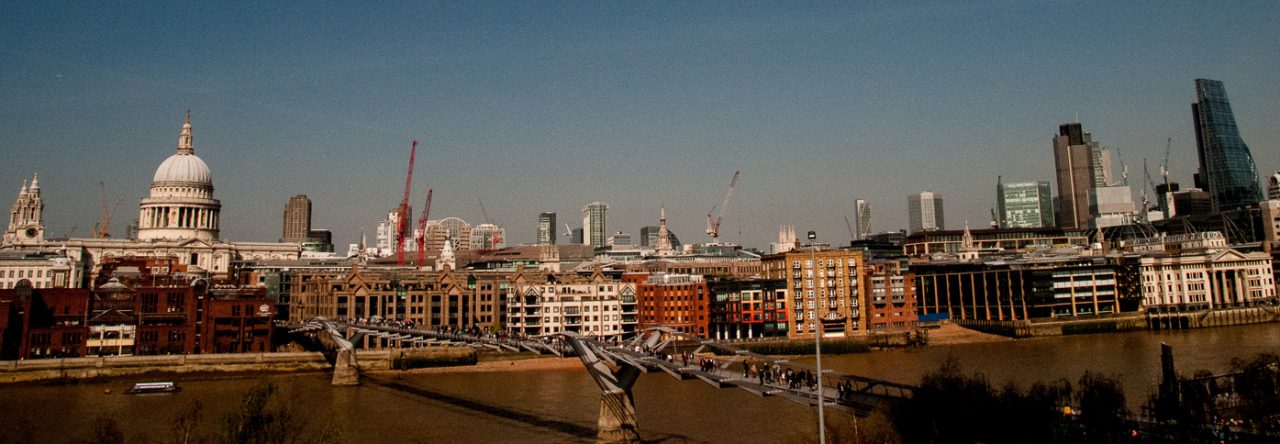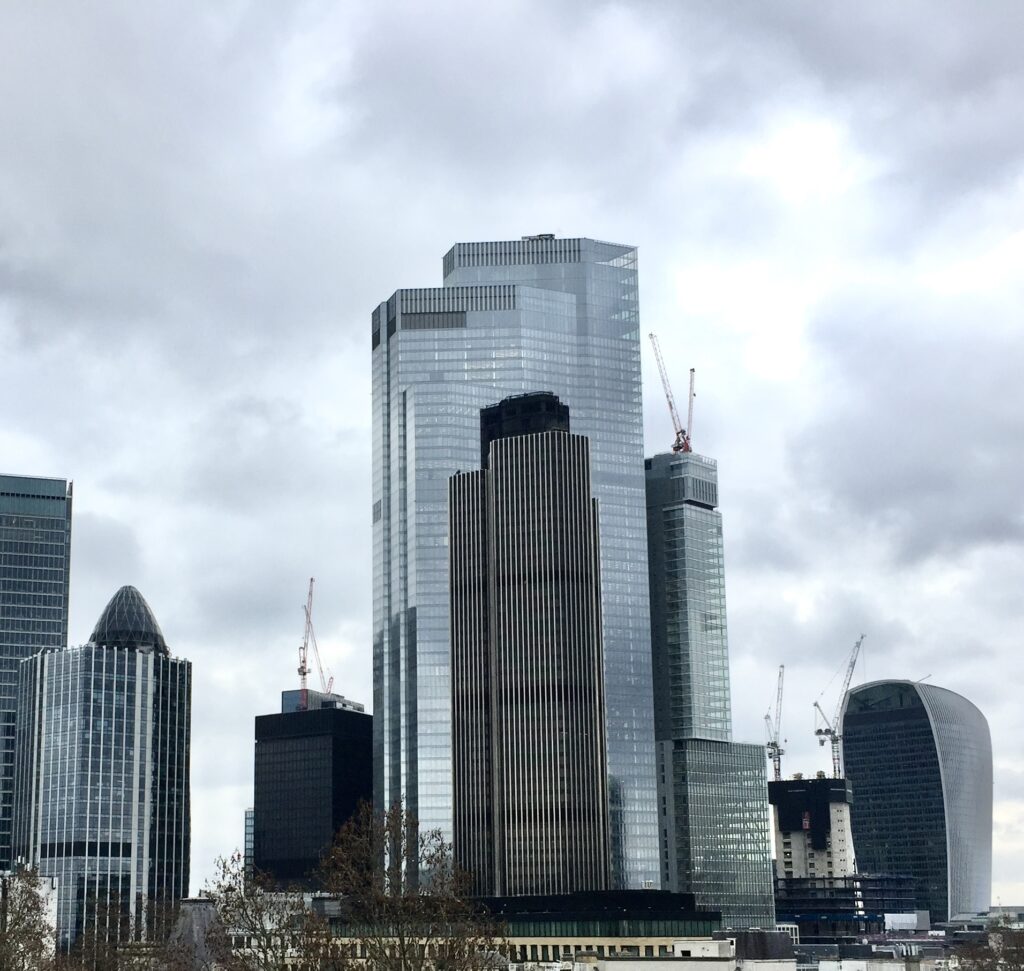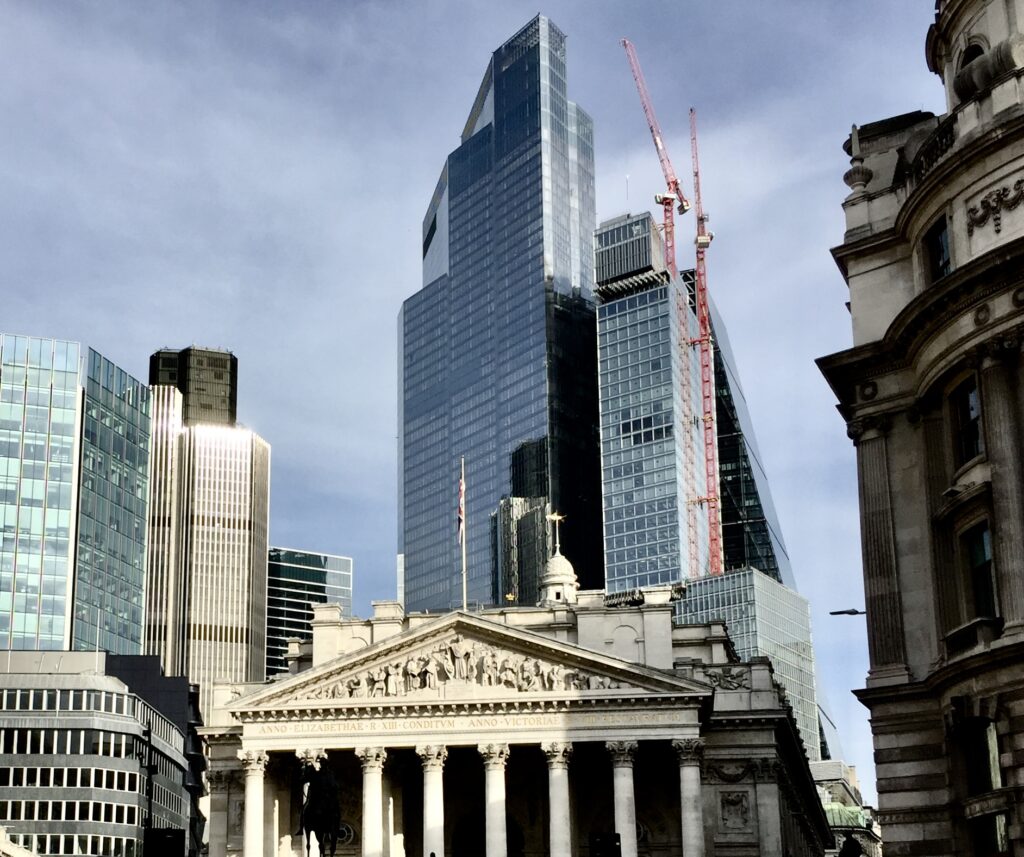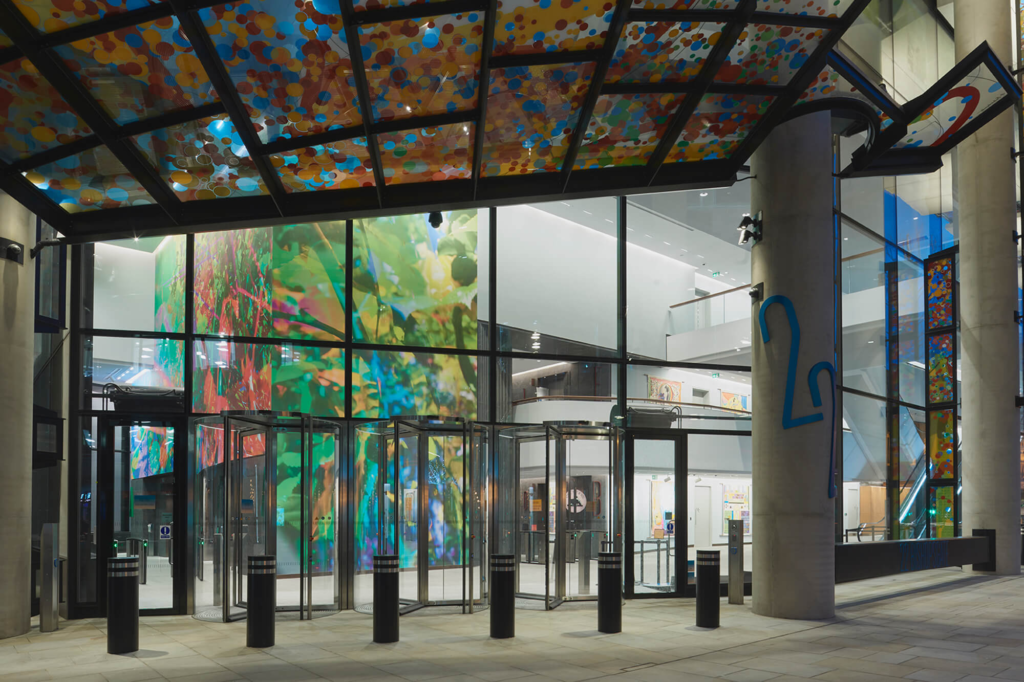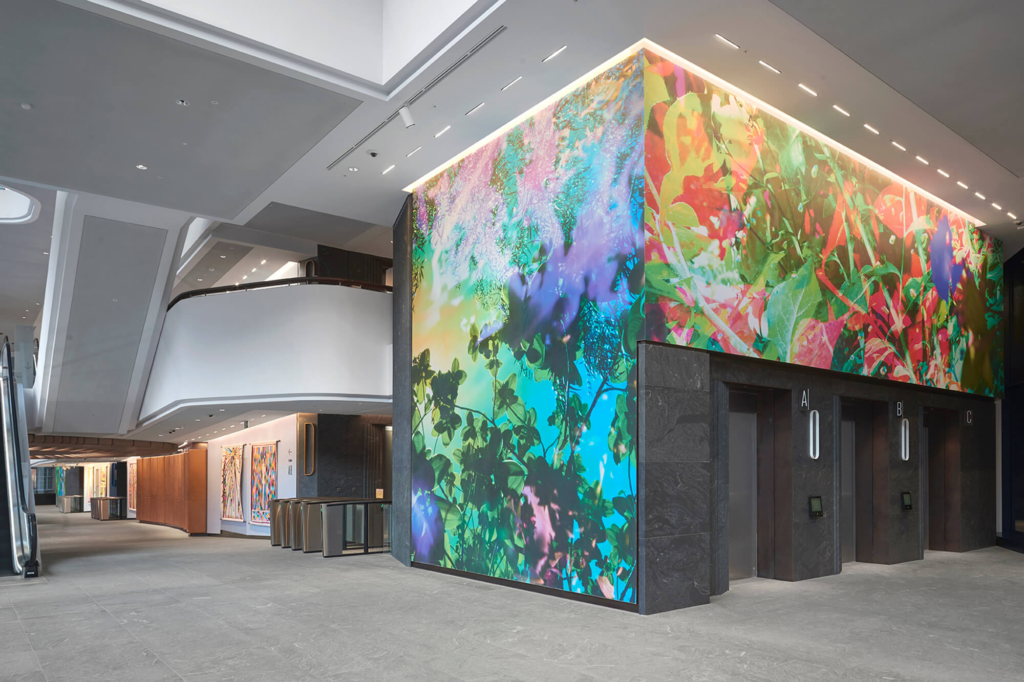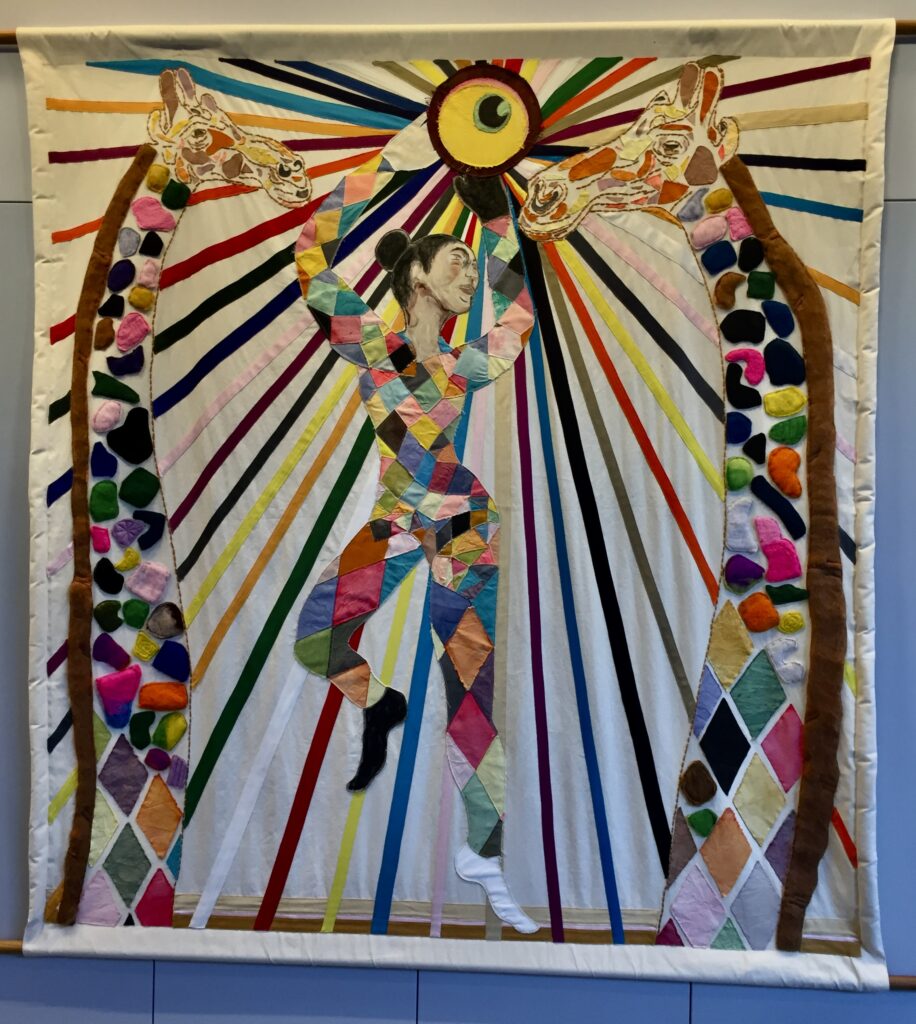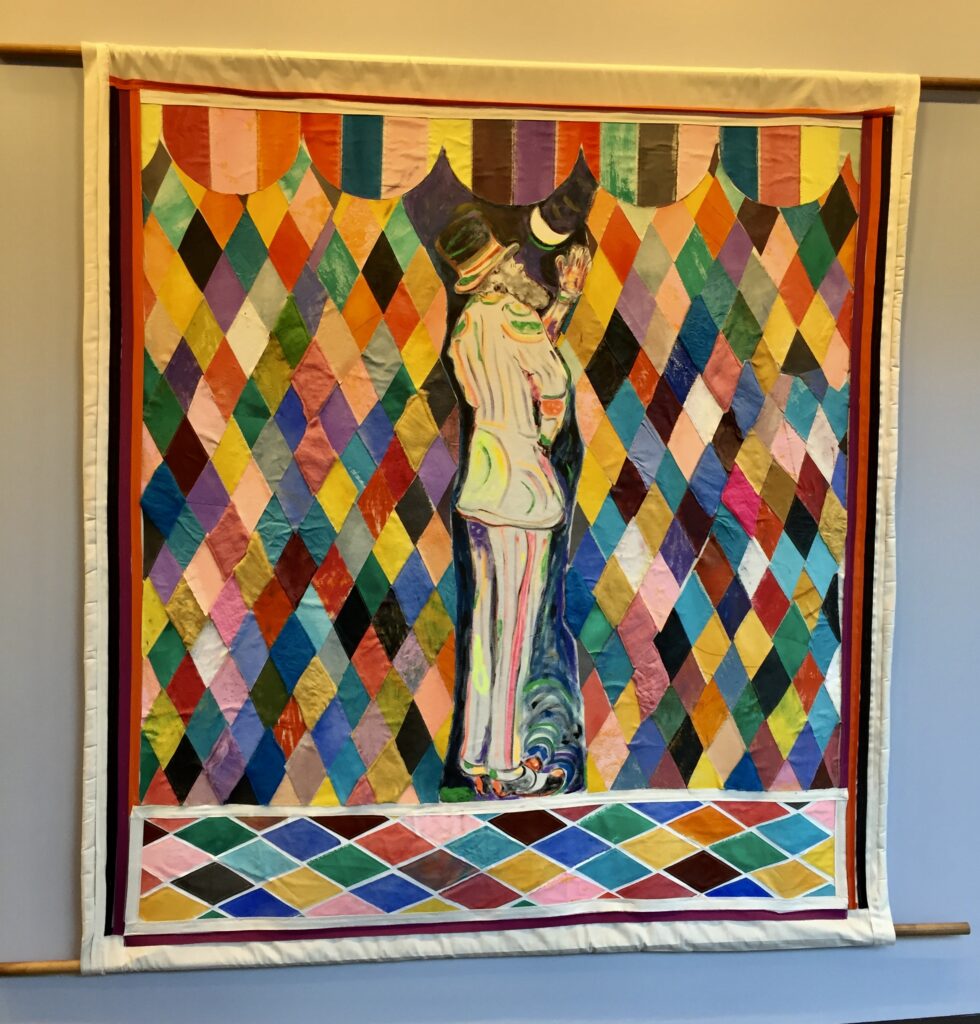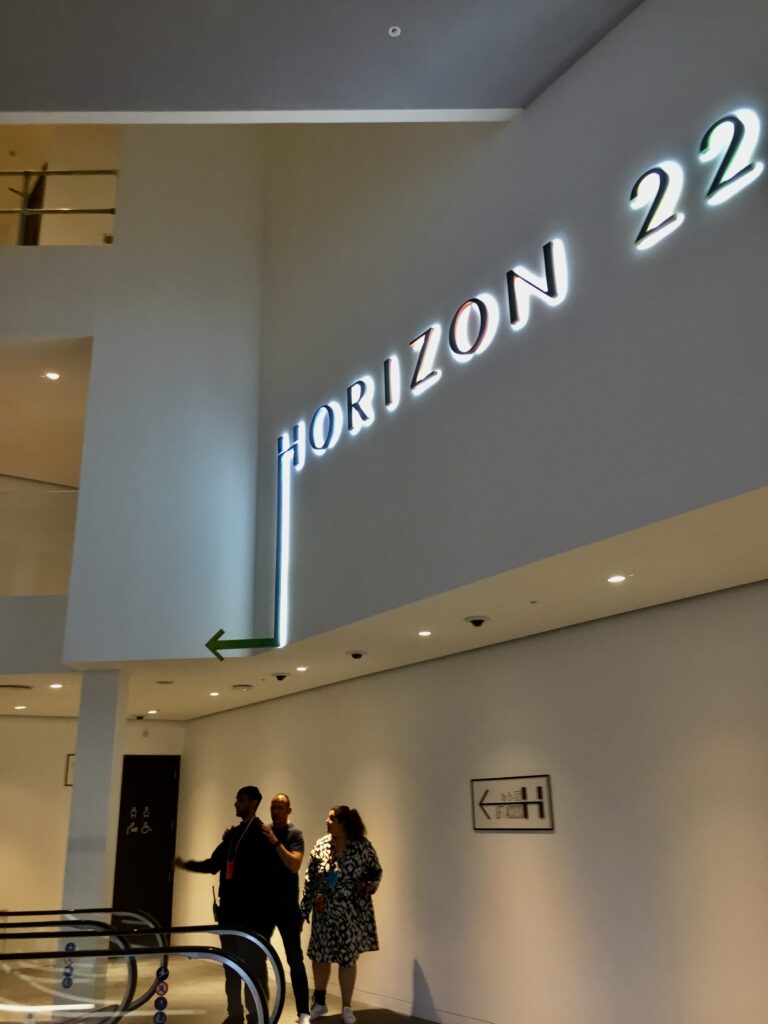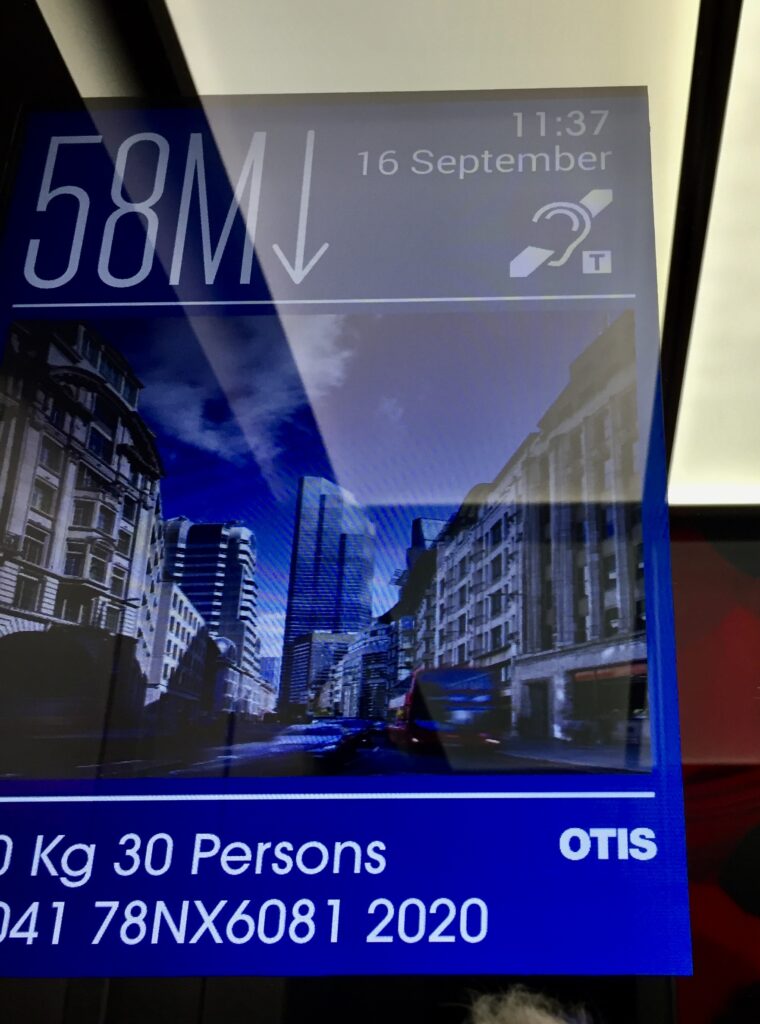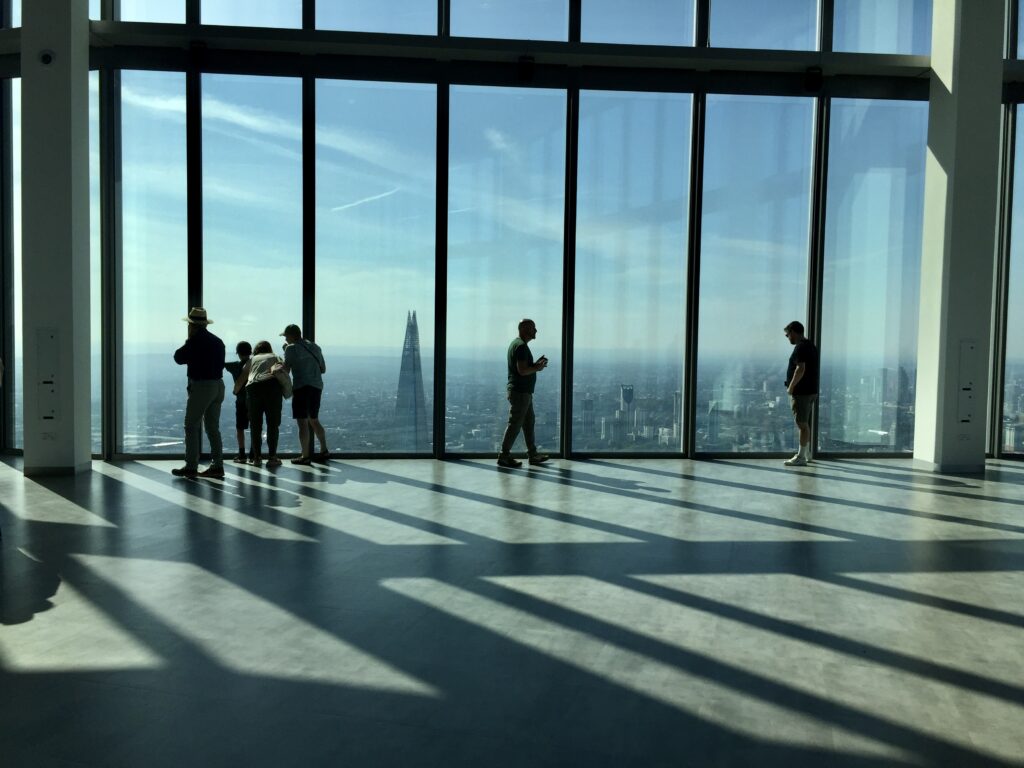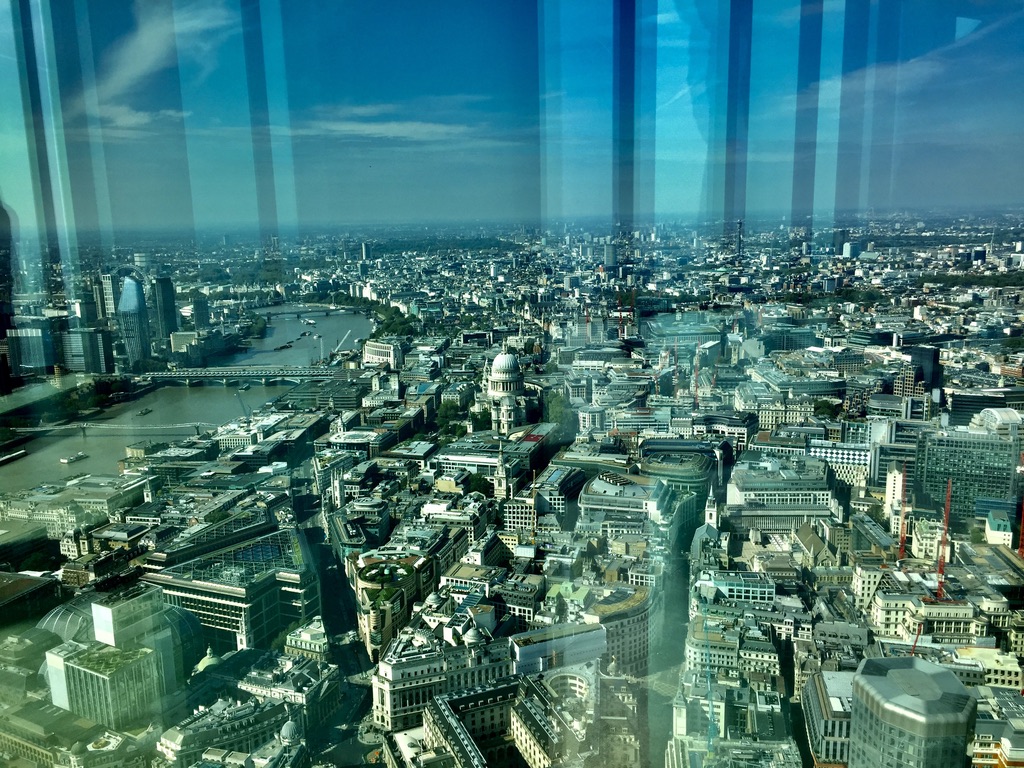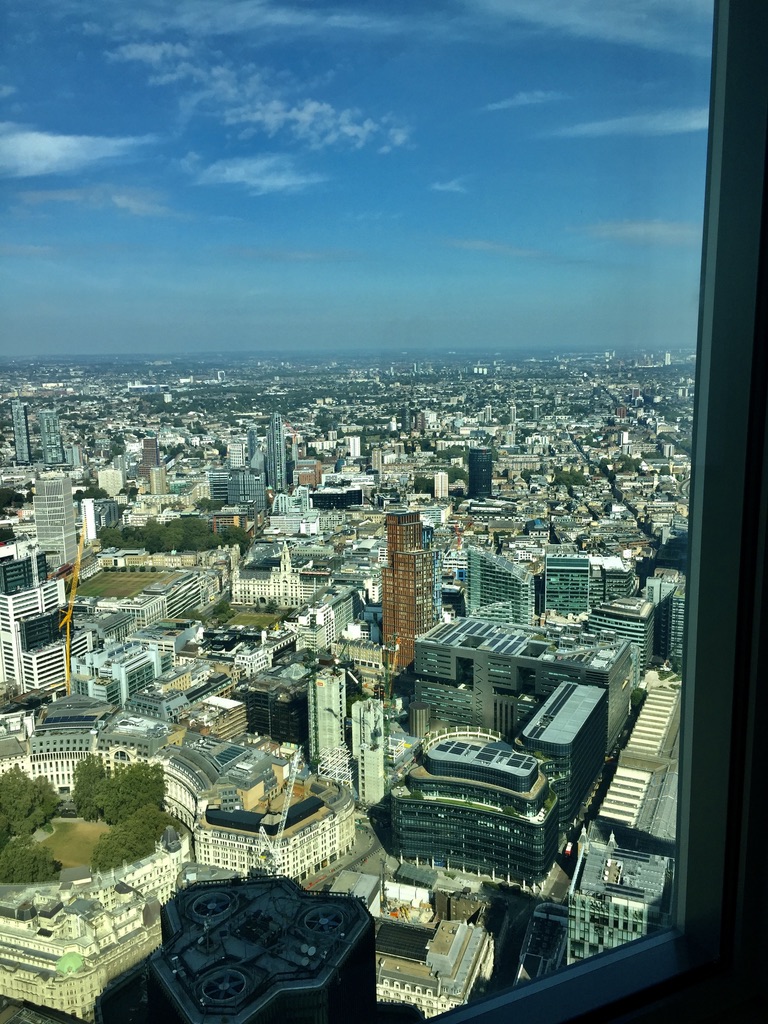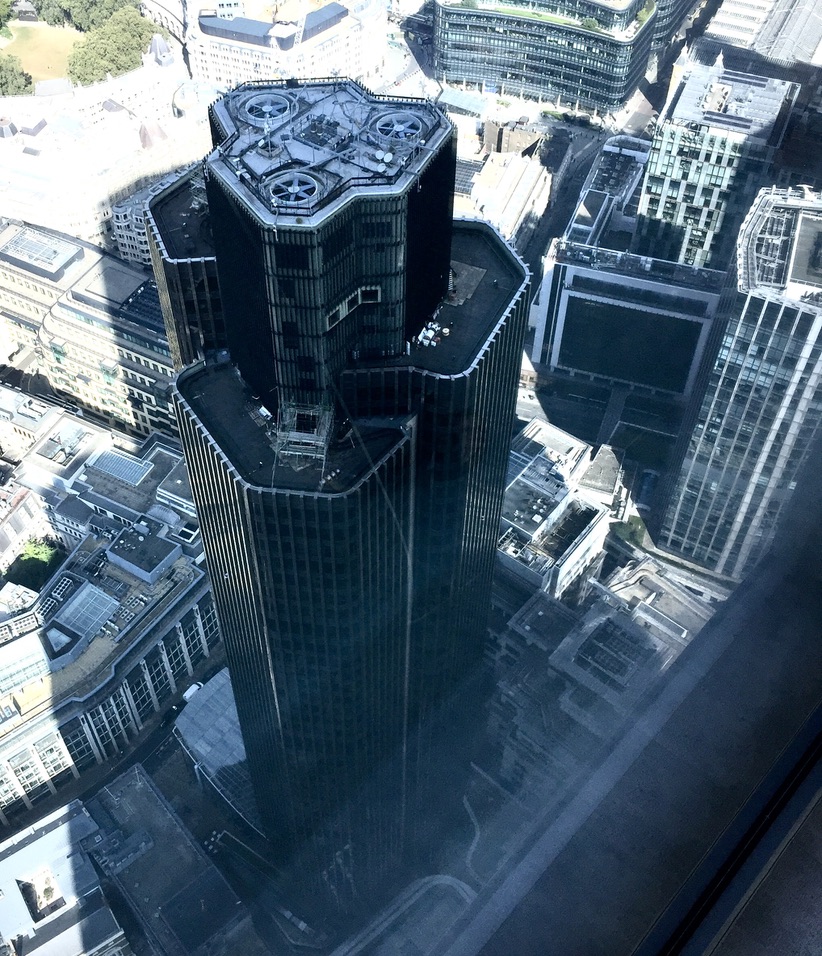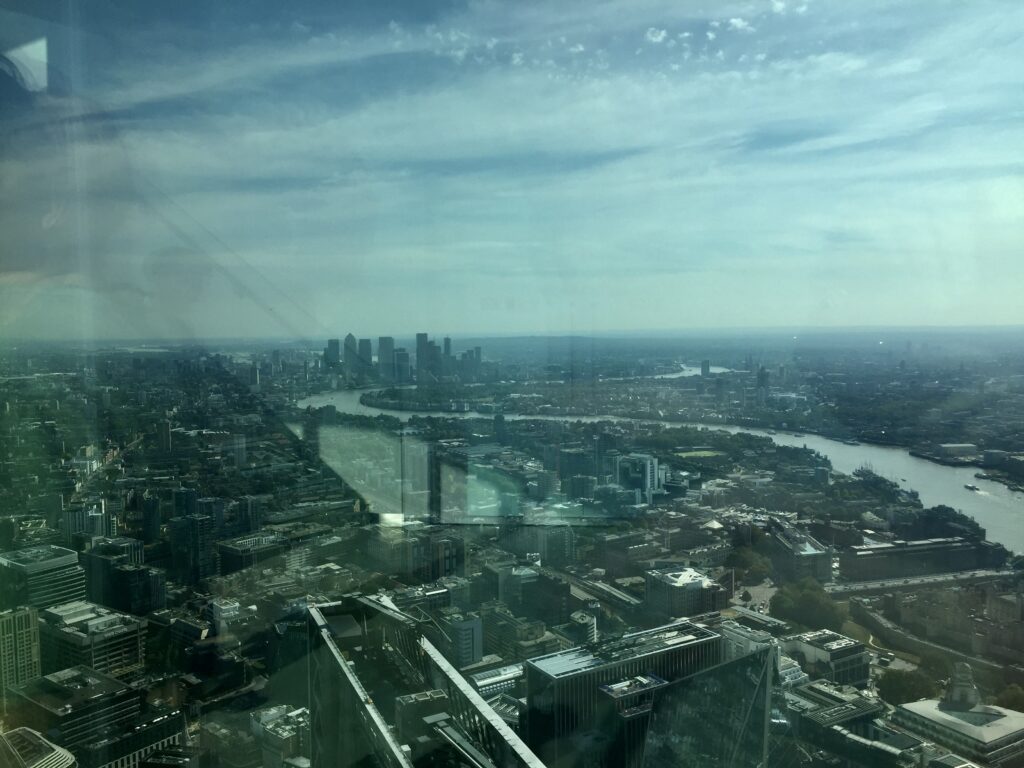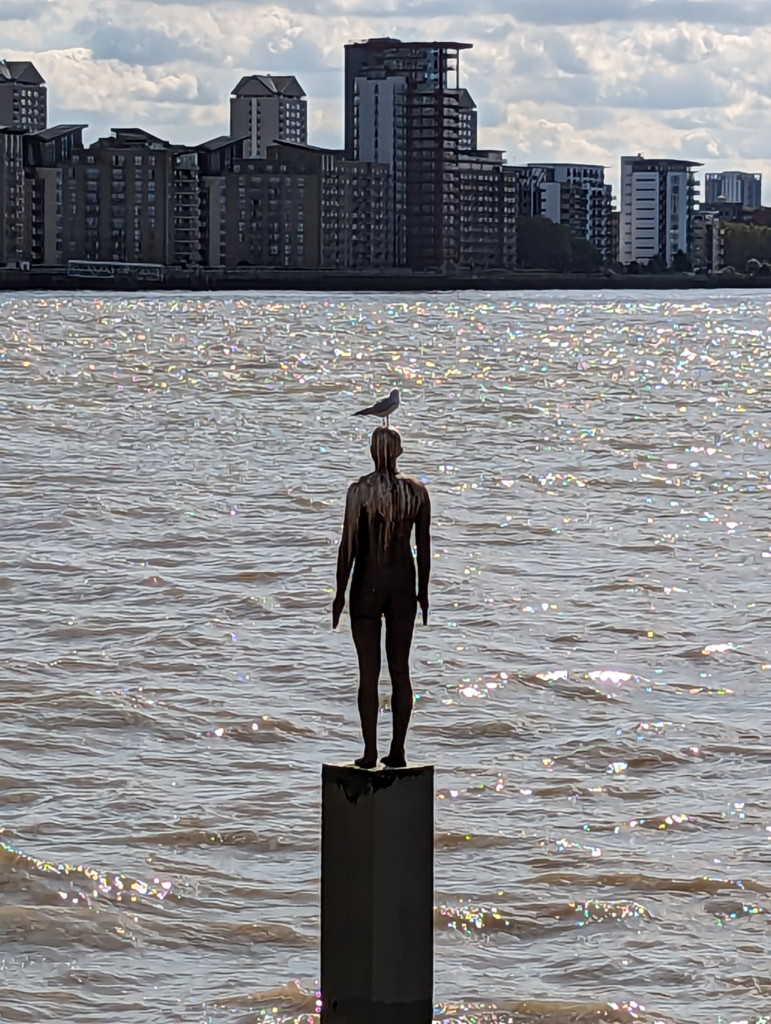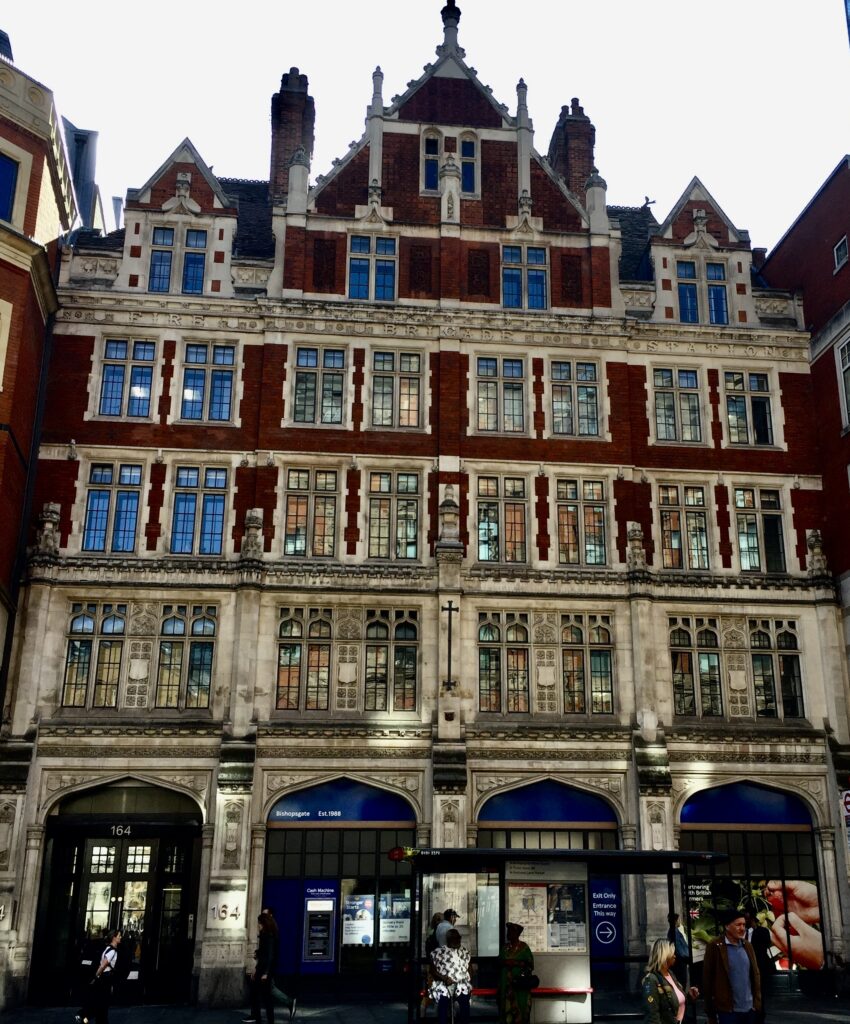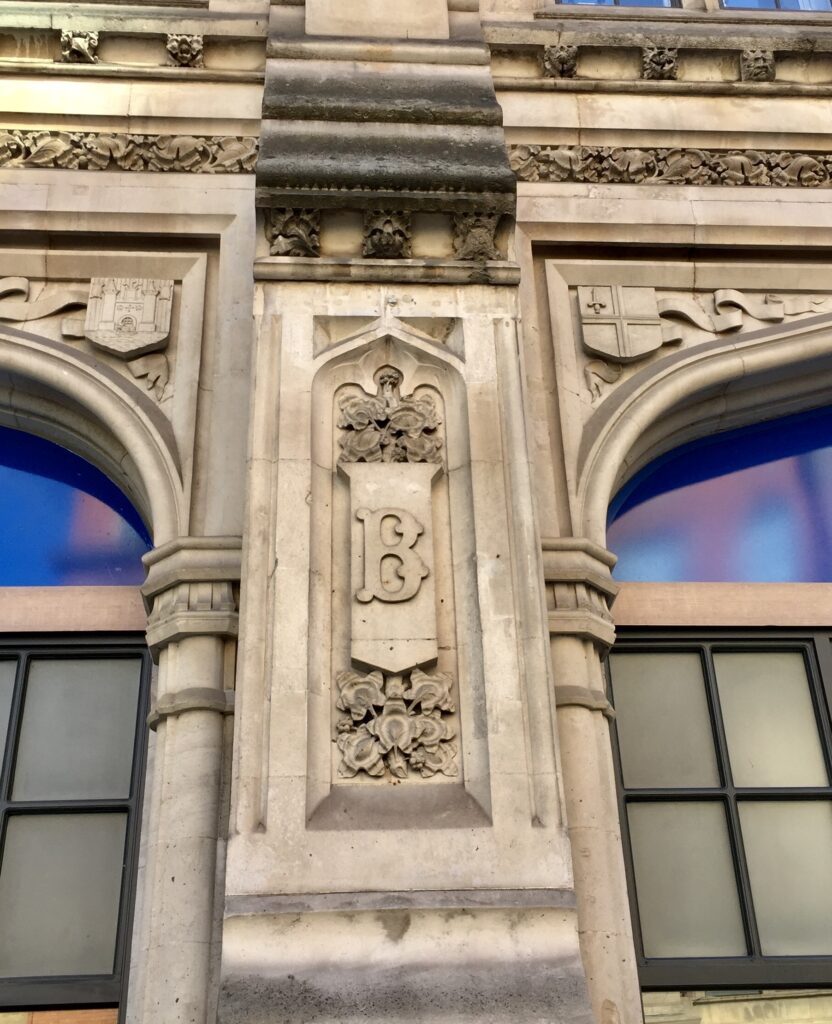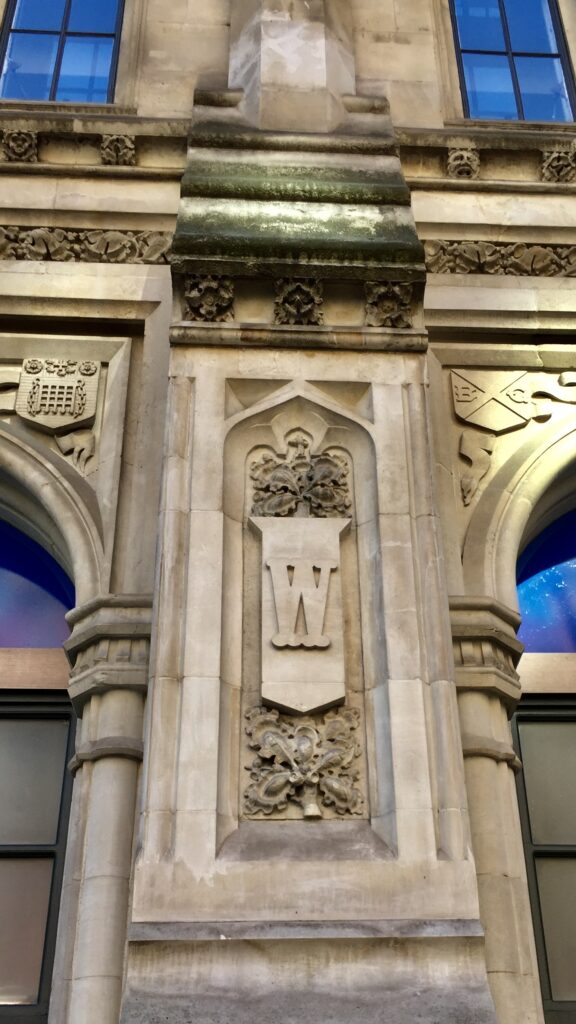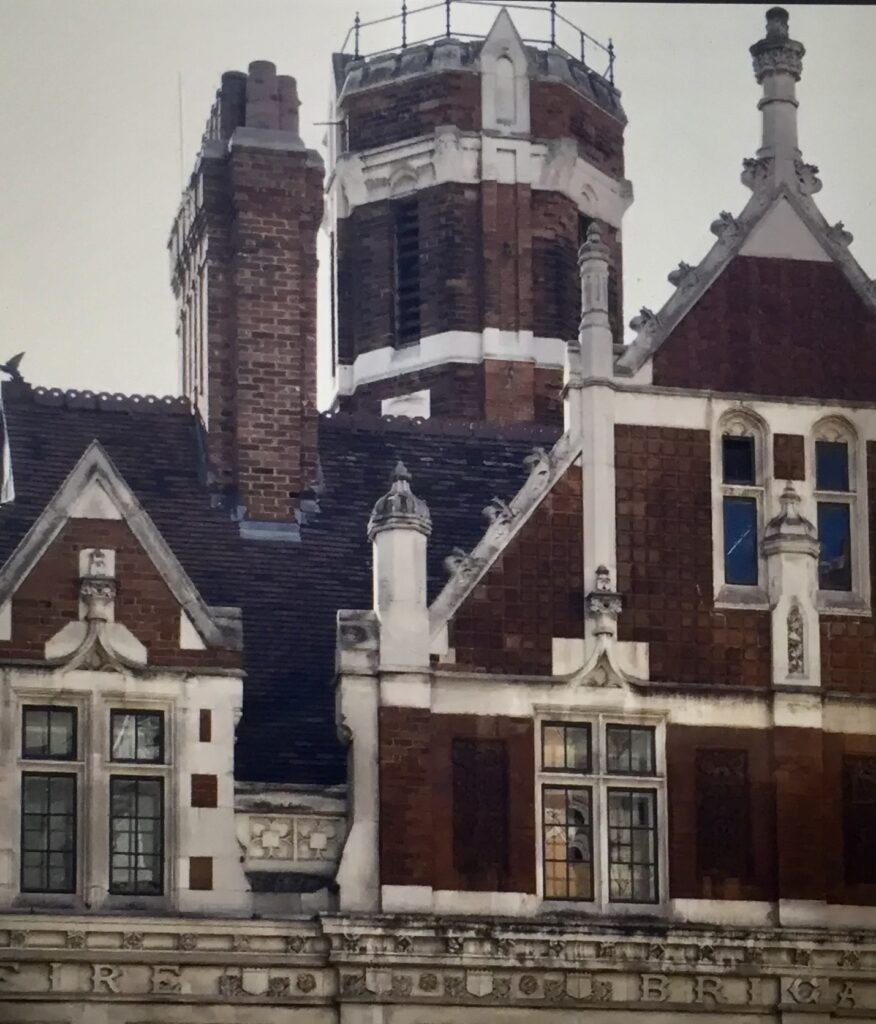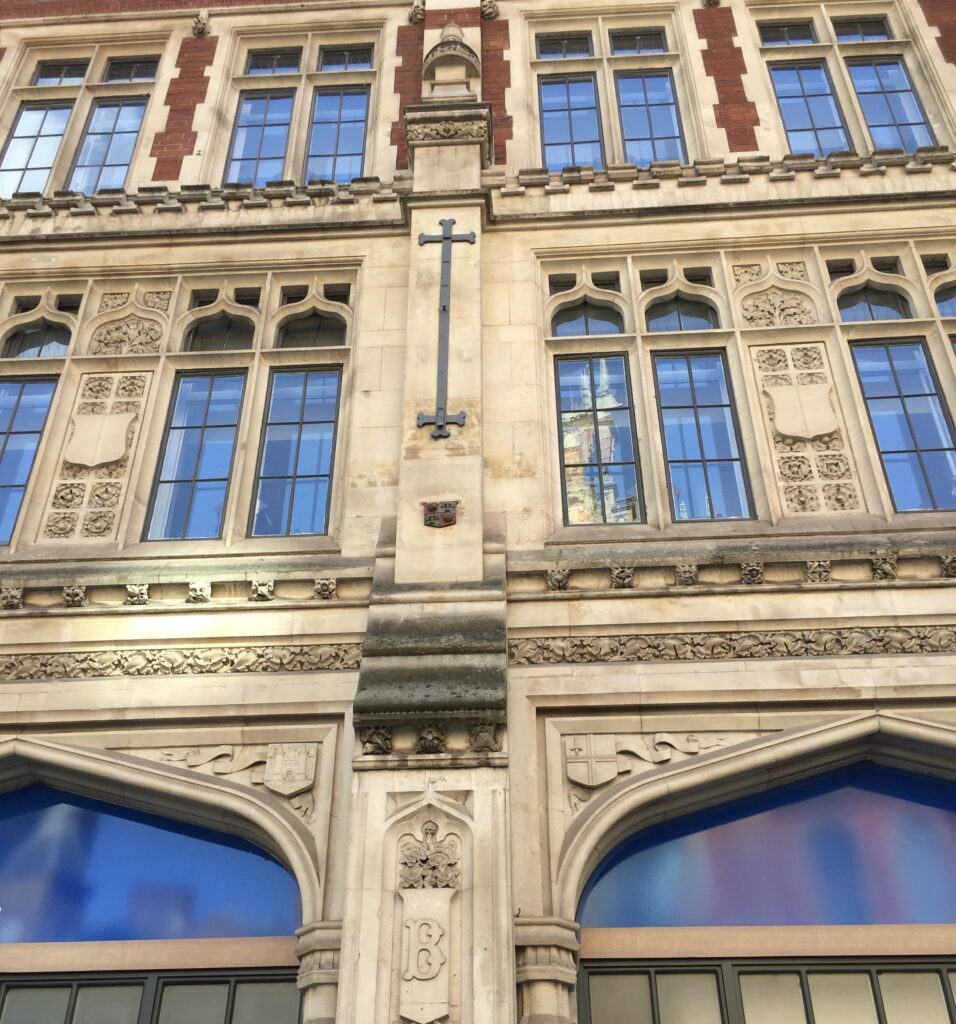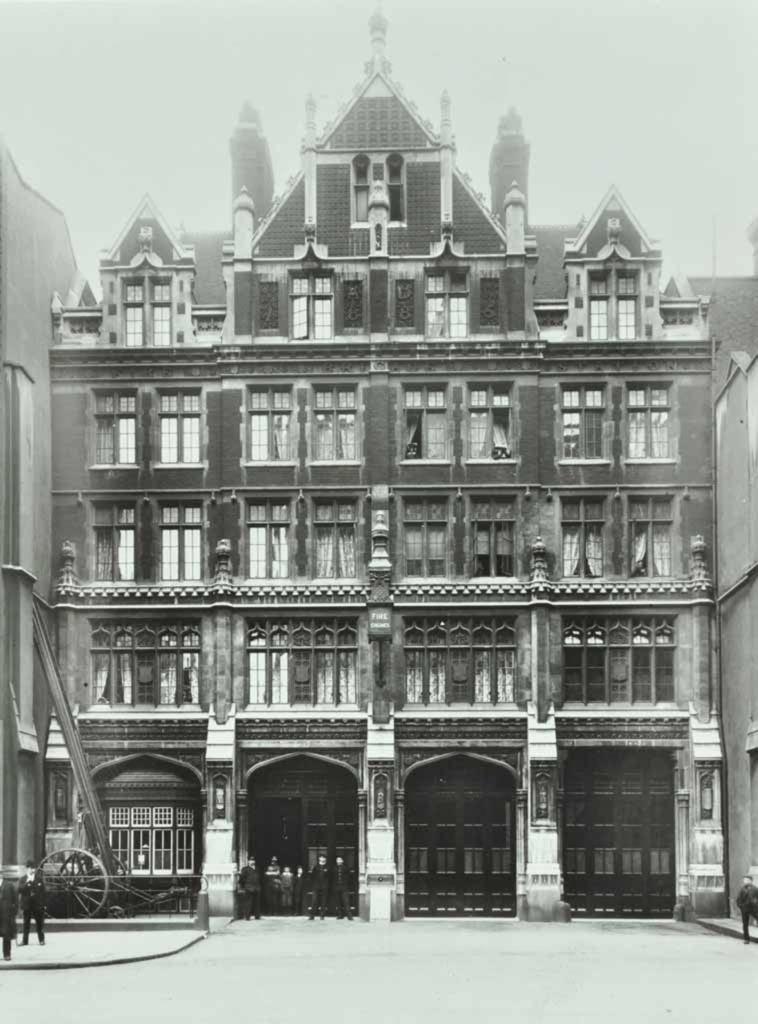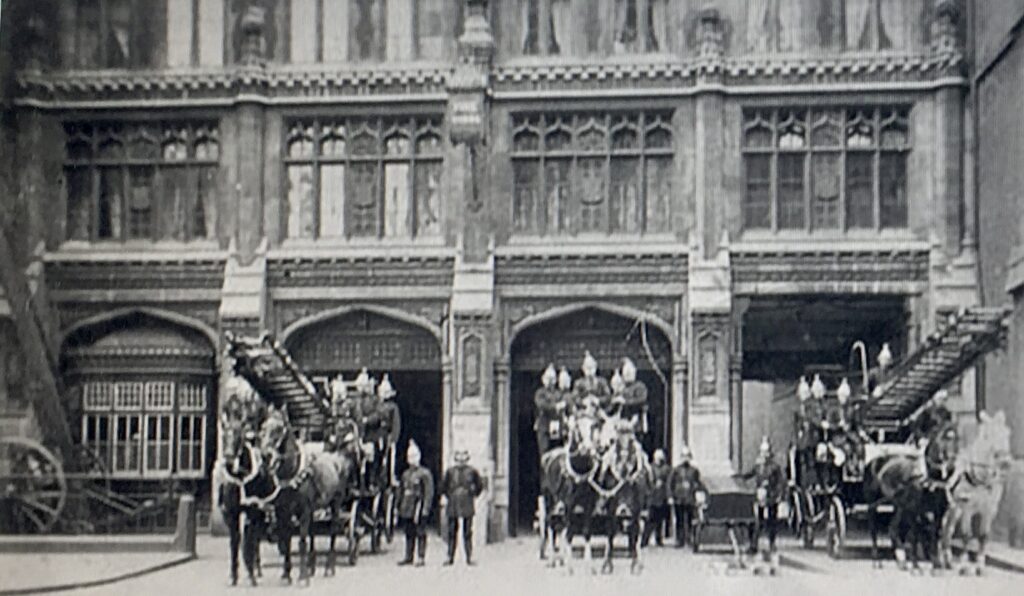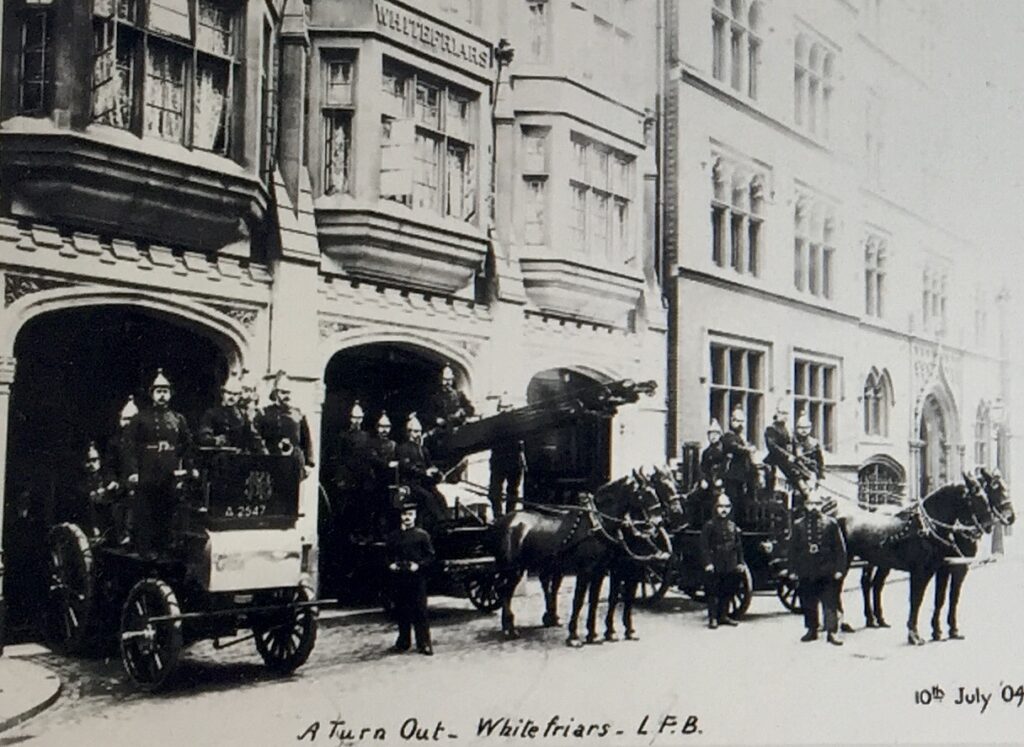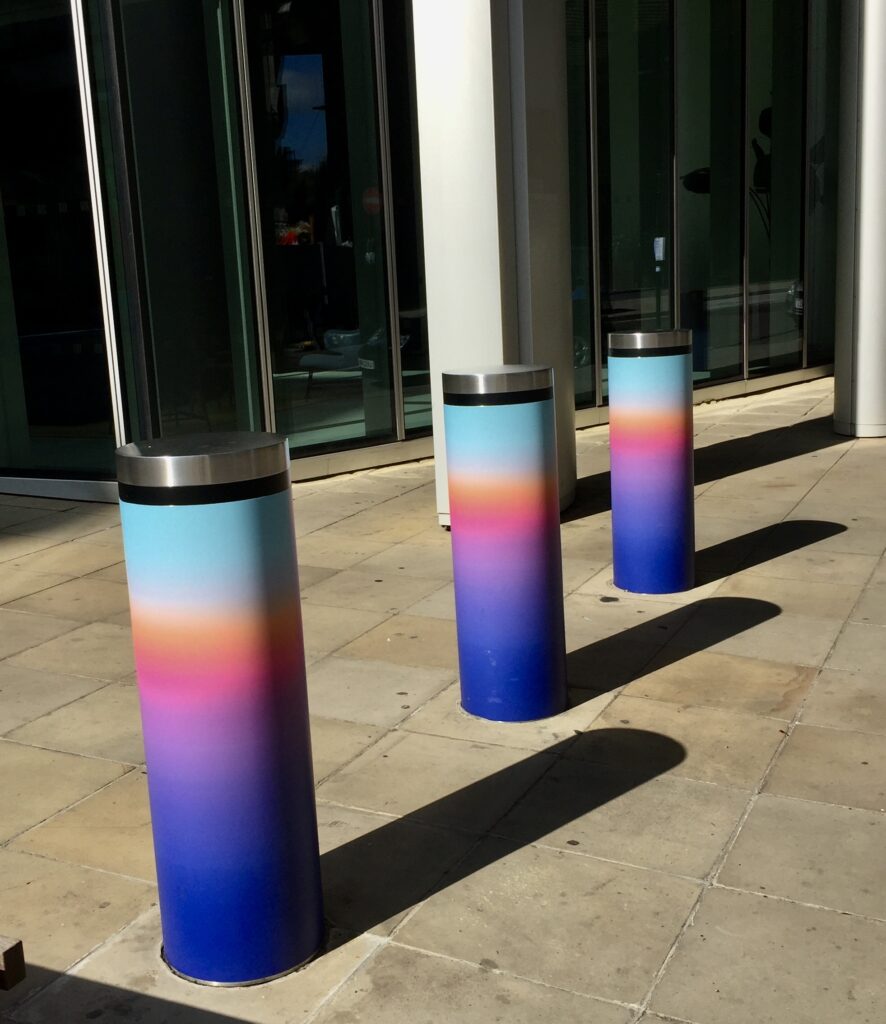I know Halloween ended a few days ago but it did inspire me to look again at spooky aspects of the City and produce a special edition. I was also enthused by a quite extraordinary house I encountered in a trip to Hampstead which had totally embraced the Halloween spirit. Here’s a sample …
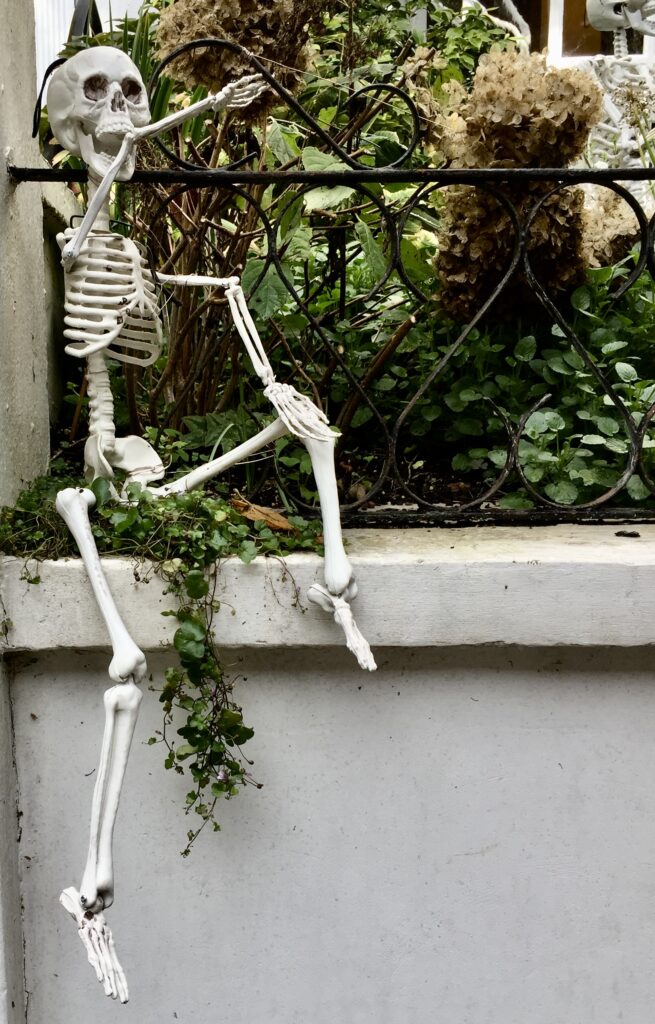
More later.
What better place to start in the City than Samuel Pepys’s ‘own church’, St Olave Hart Street.
It has a really gruesome but stunning churchyard entrance incorporating impaled skulls and crossed bones dated 11th April 1658. The Latin inscription, roughly translated, reads ‘Christ is life, death is my reward‘ and the central skull wears a victory wreath.

Charles Dickens called it ‘St Ghastly Grim’.
It’s even more disturbing becuse the banked-up surface of the churchyard is a reminder that it is still bloated with the bodies of plague victims, and gardeners still turn up bone fragments. Three hundred and sixty five were buried there including Mary Ramsay, who was widely blamed for bringing the disease to London. We know the number because their names were marked with a ‘p’ in the parish register.

Note how much higher the graveyard is than the floor at the church door.
The crypt of the ‘Journalists’ Church’, St Brides in Fleet Street, is home to a fascinating museum containing an extraordinary coffin …
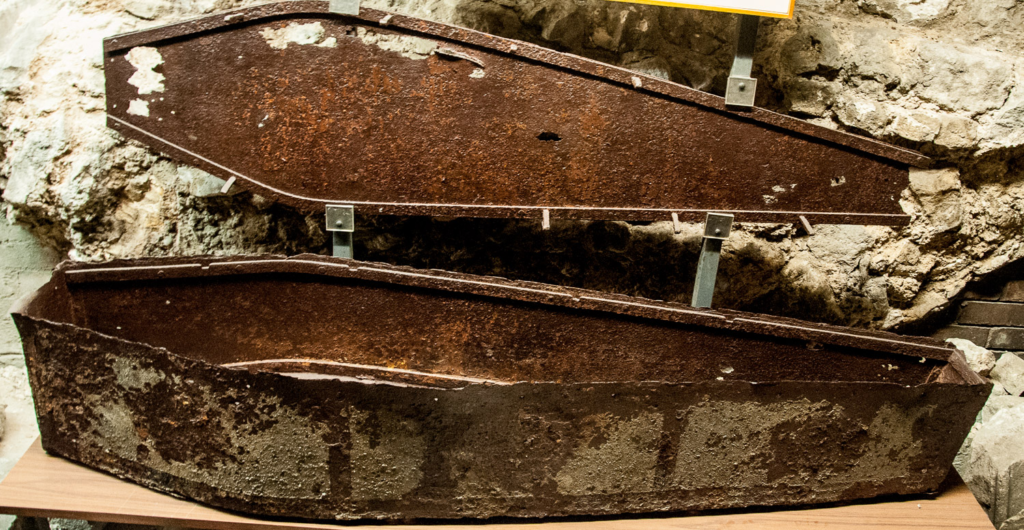
Until well into the 18th century the only source of corpses for medical research was the public hangman and supply was never enough to satisfy demand. As a result, a market arose to satisfy the needs of medical students and doctors and this was filled by the activities of the so-called ‘resurrection men’ or ‘body snatchers’. Some churches built watchhouses for guards to protect the churchyard, but these were by no means always effective – earning between £8 and £14 a body, the snatchers had plenty of cash available for bribery purposes. A tempting advertisement …
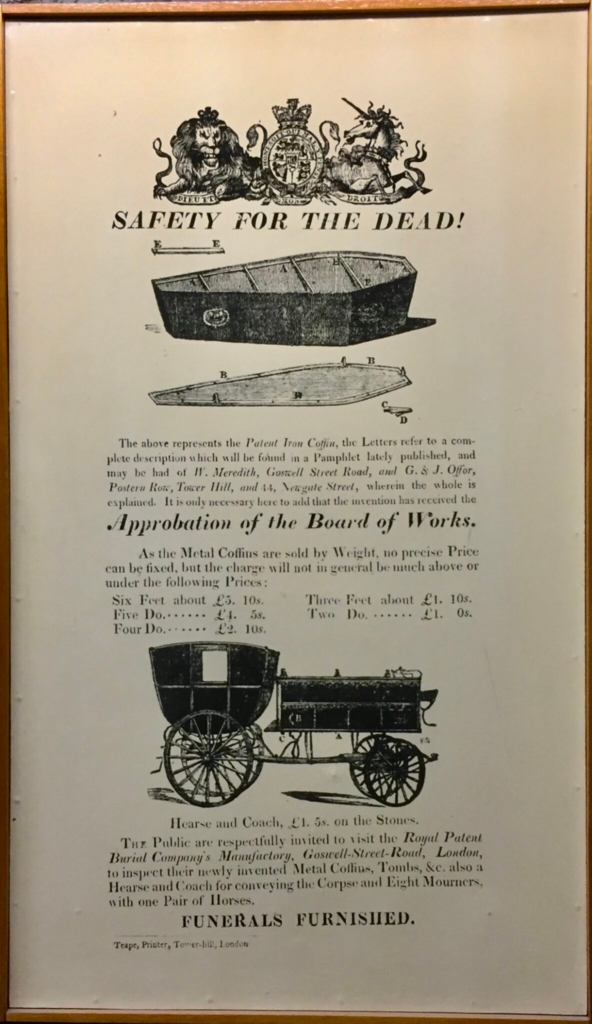
The idea was not popular with the clergy and in 1820 the churchwardens at St Andrew’s Holborn refused churchyard burial to an iron coffin. The body was taken out and buried, which led to a law suit. The judgment was that such coffins could not be refused but, since they took so much longer than wooden ones to disintegrate, much higher fees could be charged. This no doubt contributed to the relatively short time iron coffining was used.
St Brides also contains a charnel house, only opened by special arrangement. As you walk around the crypt, bear in mind that there are quite a few old Londoners resting nearby …

The primary customers for fresh corpses were the trainee surgeons at St Bartholomew’s Hospital so it’s no surprise that the nearby church of St Sepulchre had its own watchhouse. Sadly this was destroyed in the Blitz but there is a charming replica that you can see today …
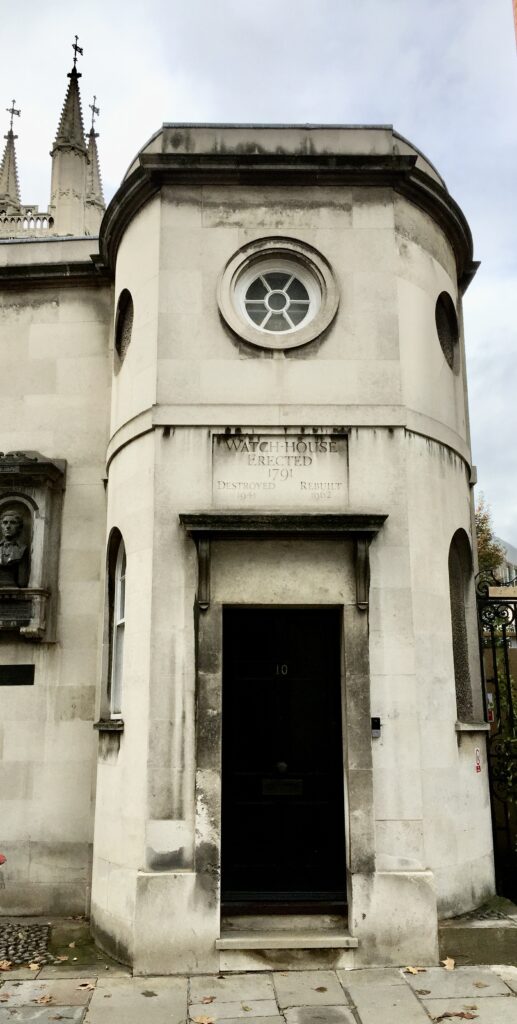
Just around the corner is the entrance to the church so do call in if you can and visit a grim reminder of the days of the notorious Newgate Gaol and public executions.
Carts carrying the condemned on their way to Tyburn would pause briefly at the church where prisoners would be presented with a nosegay. However, they would already have had an encounter with someone from the church the night before. In 1605, a wealthy merchant called Robert Dow made a bequest of £50 for a bellman from the church to stand outside the cells of the condemned at midnight, ring the bell, and chant as follows:
All you that in the condemned hole do lie, Prepare you, for tomorrow you shall die; Watch all and pray, the hour is drawing near, That you before the Almighty must appear; Examine well yourselves, in time repent, That you may not to eternal flames be sent: And when St. Sepulchre’s bell tomorrow tolls, The Lord above have mercy on your souls.
And you can still see the bell today, displayed in a glass case in the church …

About five minutes’ walk away is the beautiful church of St Bartholomew the Great inside which is what I think is one of the most disturbing sculptures in the City …
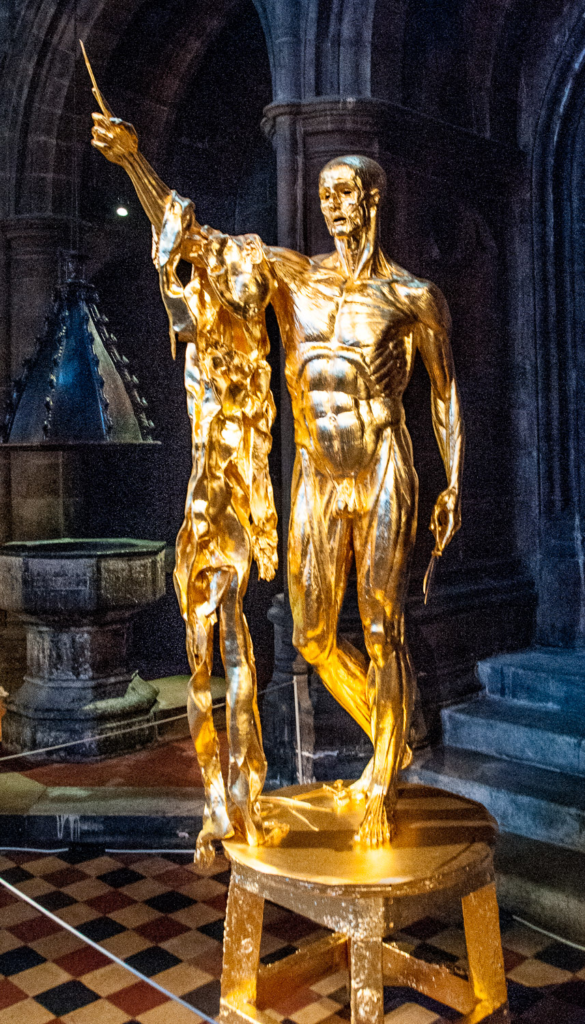
Entitled Exquisite Pain, as well as his skin St Bartholomew also holds a scalpel in one hand and a pair of scissors in the other. The second surprise, to me anyway, was that this work was by Damien Hirst, the modern artist known particularly for his spot paintings and the shark swimming in formaldehyde. St Bartholomew is the patron saint of Doctors and Surgeons and Hirst has said that this 2006 work ‘acts as a reminder that the strict demarcation between art, religion and science is a relatively recent development and that depictions of Saint Bartholomew were often used by medics to aid in anatomy studies’. He went on to say that the scissors were inspired by Tim Burton’s film ‘Edward Scissorhands’ (1990) to imply that ‘his exposure and pain is seemingly self- inflicted. It’s kind of beautiful yet tragic’. The work is on long-term loan from the artist …
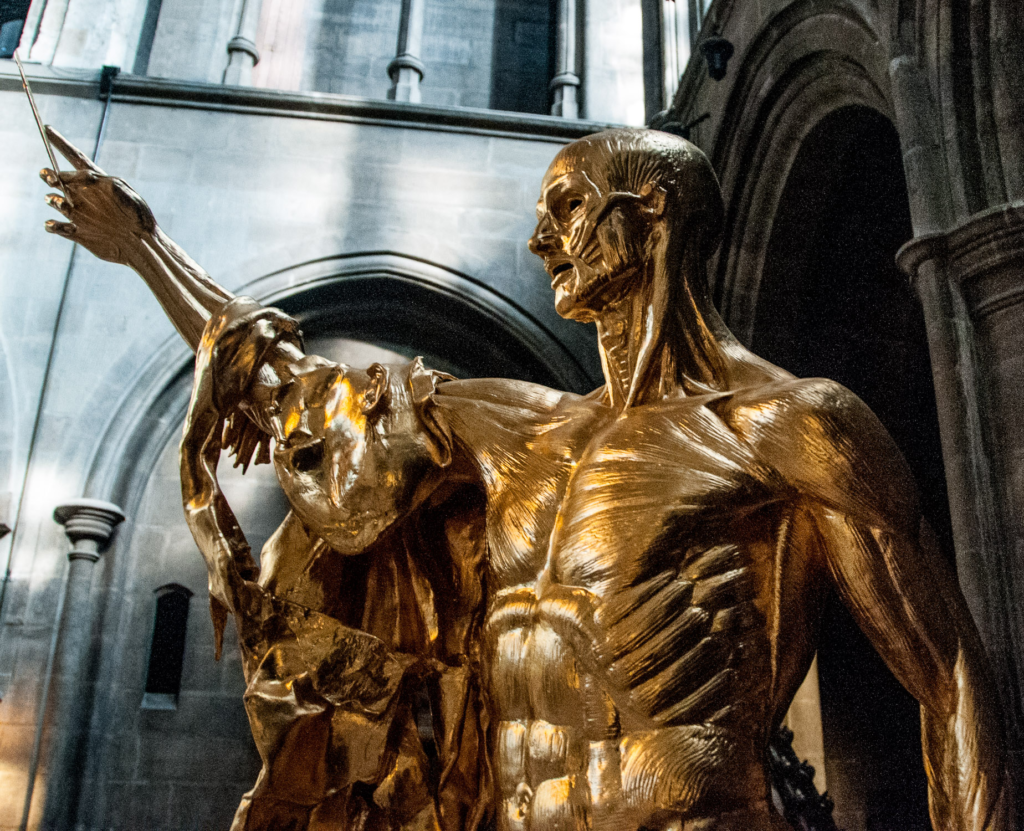
There’s nothing like a nice relic – even if it’s not on open display.
This is St Ethelreda’s Roman Catholic church in Ely Place (a road strange in its own right since it is privately managed by its own body of commissioners and beadles) …

The building is one of only two surviving in London from the reign of Edward I and dates from between 1250 and 1290. It is dedicated to Aethelthryth or Etheldreda, the Anglo-Saxon saint who founded the monastery at Ely in 673. According to the story, sixteen years after she died of the plague her body was exhumed in 695 and was found to be pure and uncorrupted with even her clothes having miraculous properties. Although her body has been lost it is said that her uncorrupted hand still rests in a casket in this church.
Unfortunately, this reliquary is kept beside the high altar and I couldn’t gain access so we must make do with an online image …

Nevertheless, it wasn’t a wasted visit. The church is a fascinating place as can be seen from some of the images I did take …
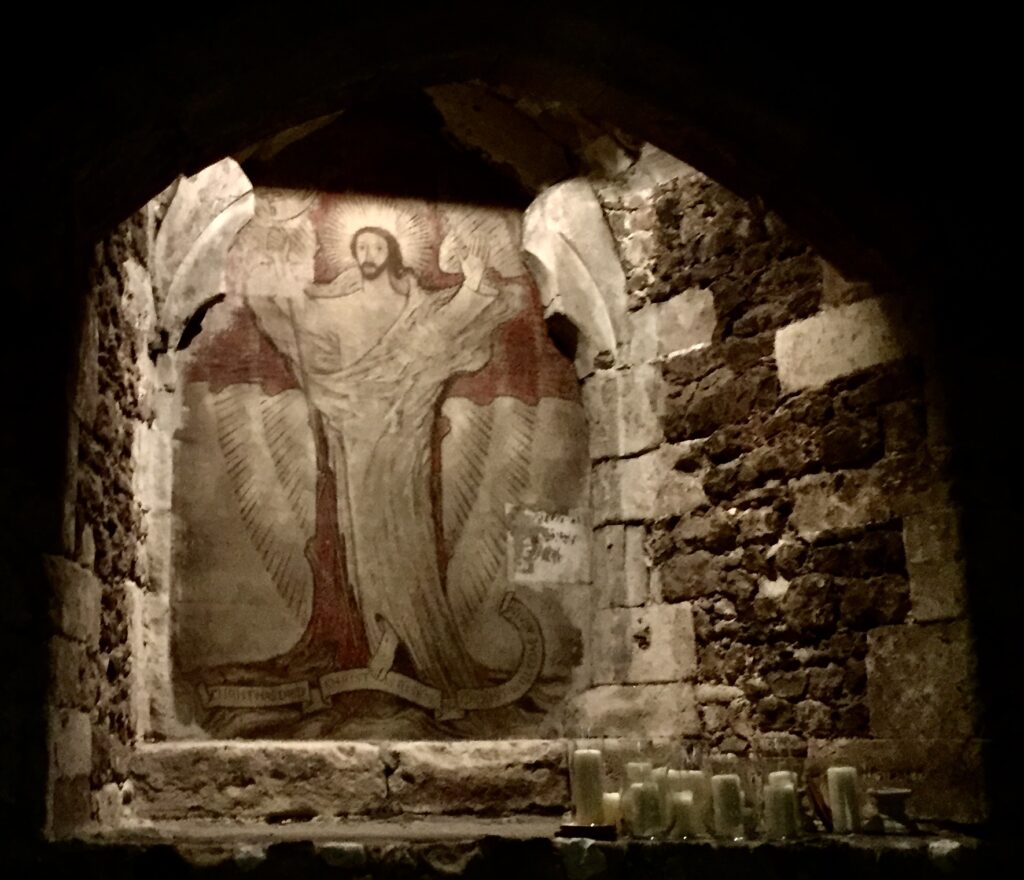
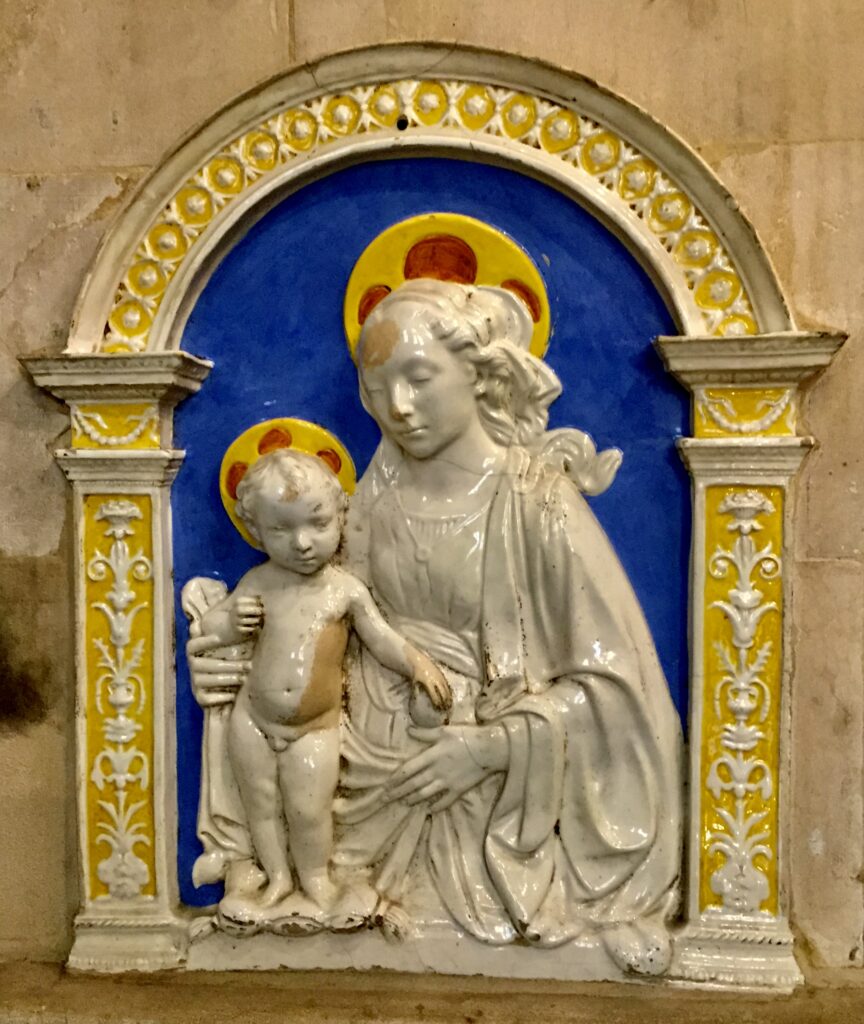
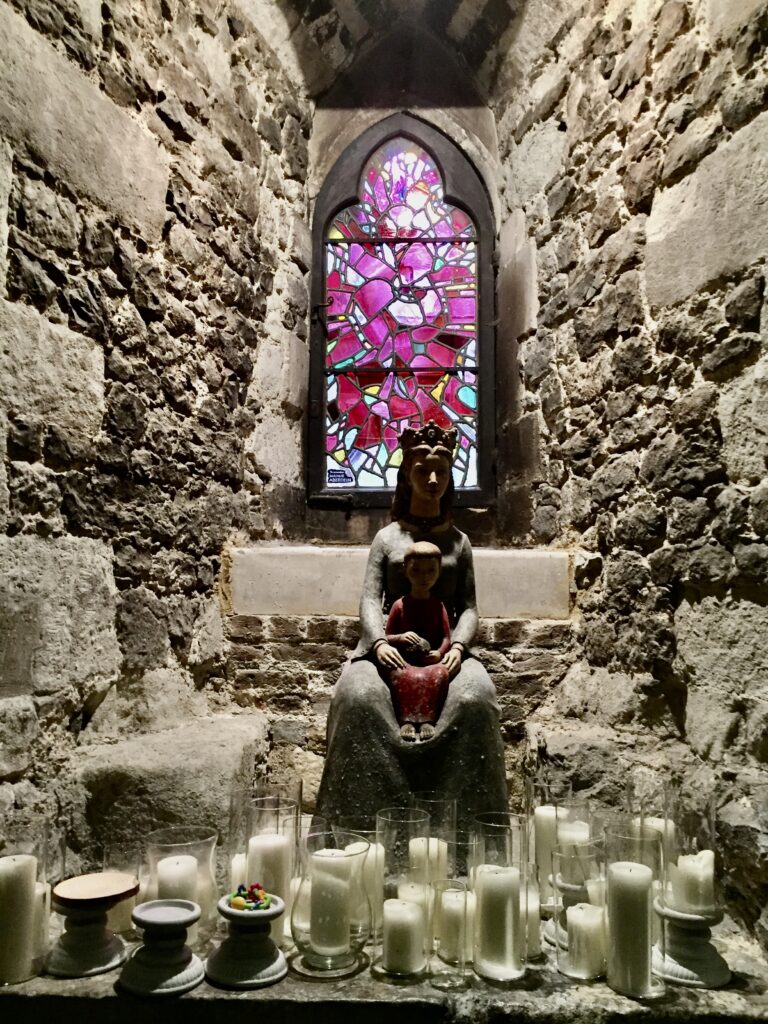
So I shall be back.
And finally, the Hampstead house on Flask Walk that truly embraced the spirit of Halloween.
Disabling the burglar alarm …
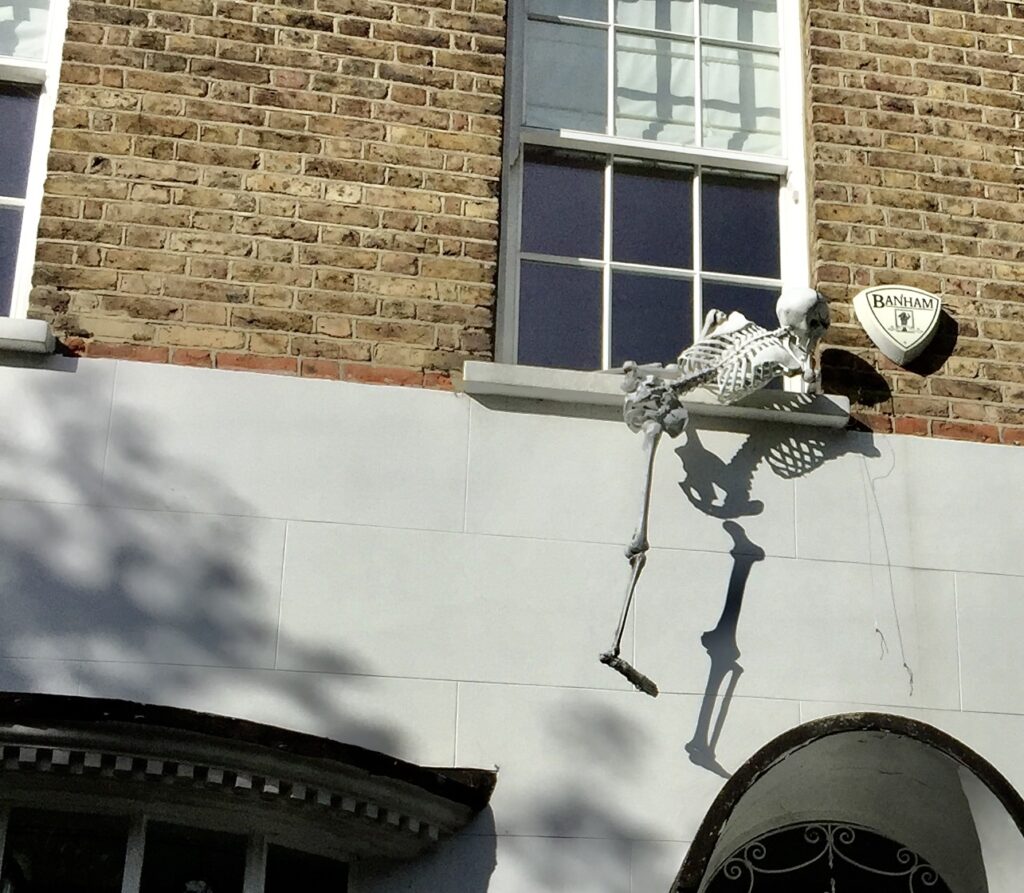
Hilarious!
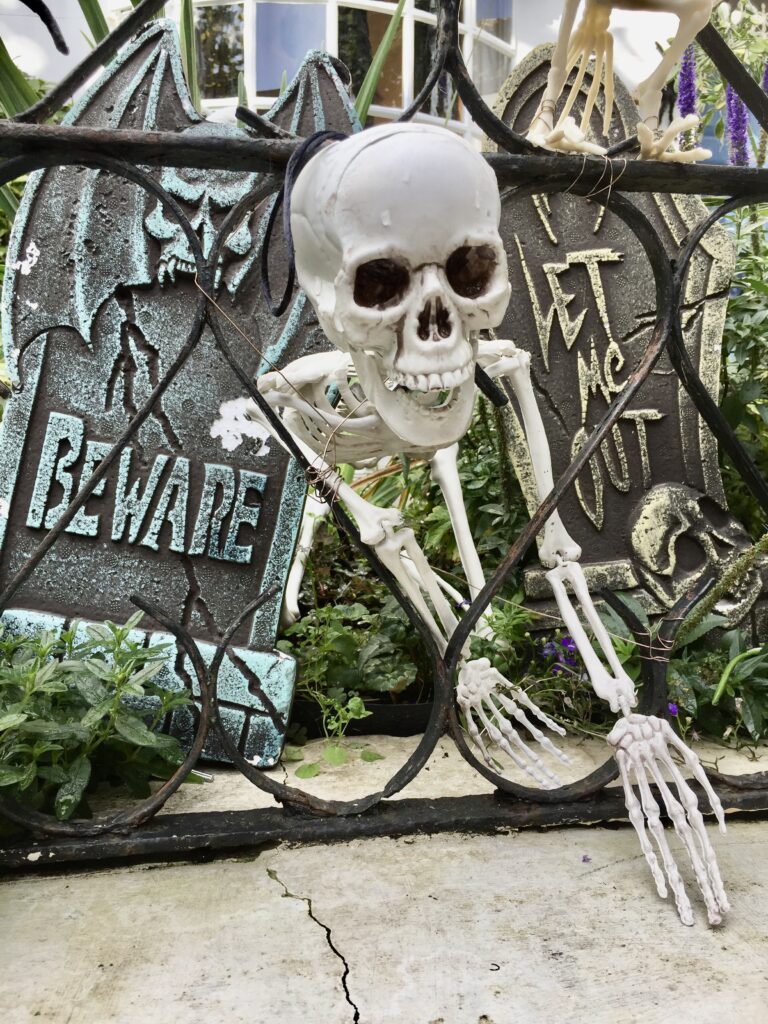
The gang’s all here …
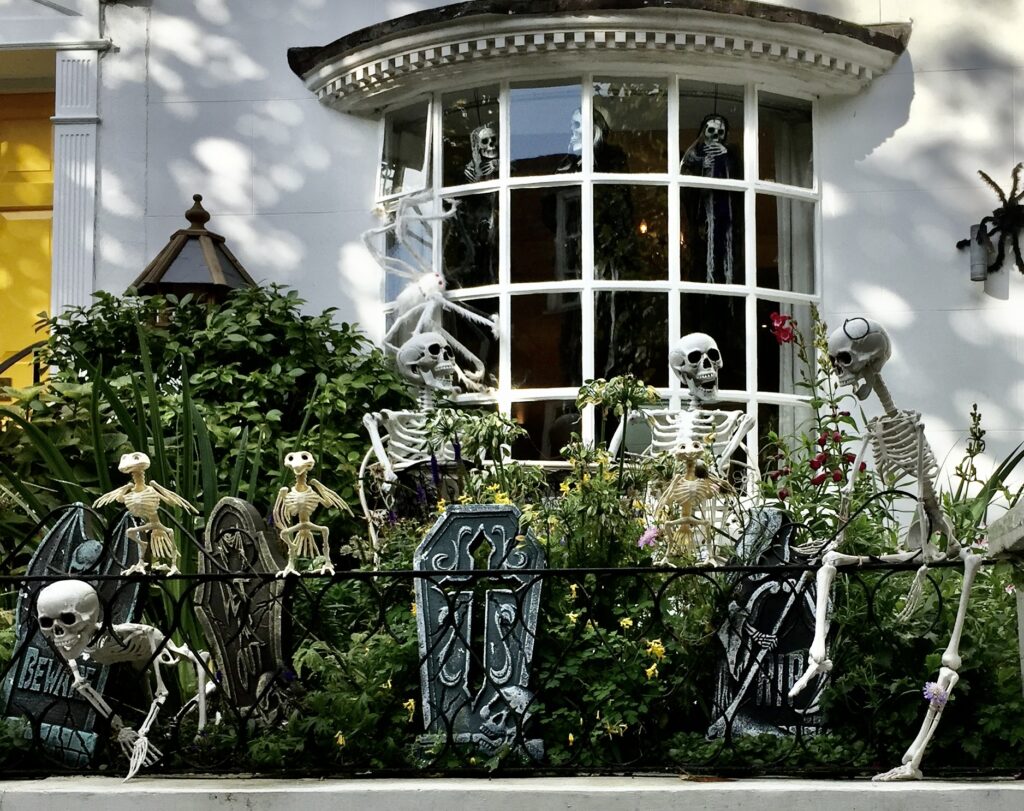
Welcome!
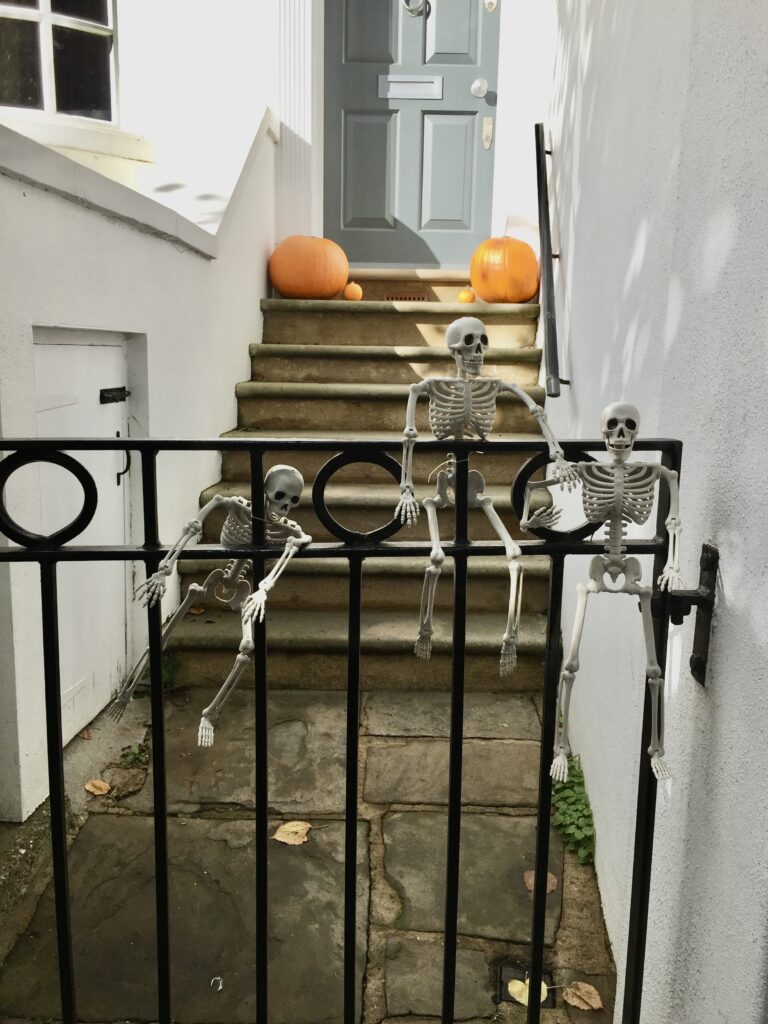

If you would like to follow me on Instagram here is the link …
